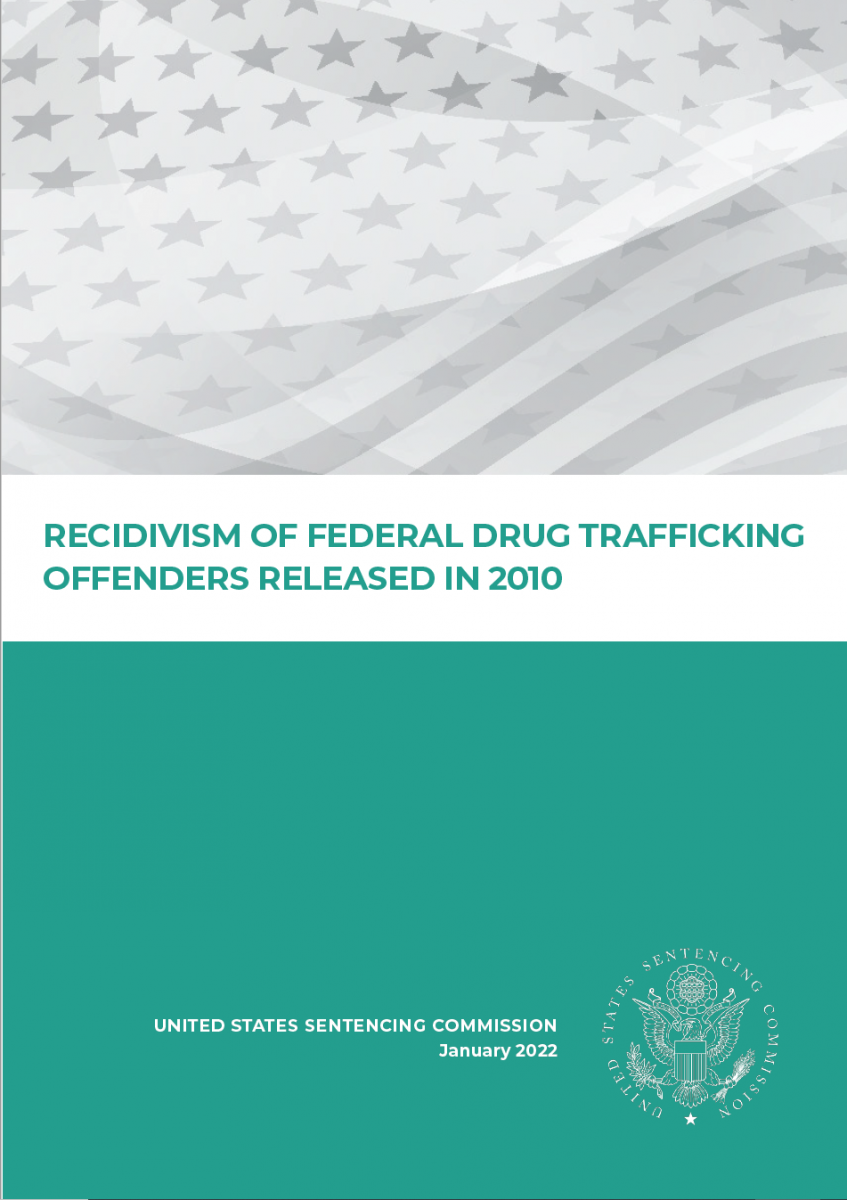Overview

The final study group of 13,783 drug trafficking offenders satisfied the following criteria:
- United States citizens
- Re-entered the community during 2010 after discharging their sentence of incarceration or by commencing a term of probation in 2010
- Not reported dead, escaped, or detained
- Have valid FBI numbers that could be located in criminal history repositories (in at least one state, the District of Columbia, or federal records)
Key Findings
- The rearrest rate for drug trafficking offenders released in 2010 was similar to the rate for those released in 2005 despite intervening changes in the criminal justice system: the Supreme Court’s decision in Booker, adjustments to sentencing of crack cocaine offenses, and increased use of evidence-based practices in federal supervision.
- The rearrest rate for a new offense or an alleged violation of supervision conditions was similar for drug trafficking offenders (47.9%) as compared to all other offenders released in 2010 (50.4%).
- Of those drug trafficking offenders released in 2010 who were rearrested, the median time from re-entry to the first rearrest was 23 months. By comparison, the median time from re-entry to the first rearrest for all other offenders was 16 months.
-
Crack cocaine trafficking offenders were rearrested at the highest rate (57.8%) of any drug type, while powder cocaine trafficking offenders were rearrested at the lowest rate (41.8%). Rearrest rates for other primary drug types ranged from 42.7 percent to 46.7 percent.
- Approximately one-third (32.0%) of drug trafficking offenders who were rearrested had drug-related offenses (either drug trafficking, drug possession, or another drug offense) as their most serious new charge at rearrest. Nearly one-fifth (19.9%) were charged with assault at rearrest.
- Criminal history was strongly correlated with rearrest. Drug trafficking offenders’ rearrest rates ranged from 29.9 percent for offenders with zero criminal history points to 74.9 percent for offenders with 13 or more criminal history points.
- Age at release into the community also was strongly correlated with likelihood of rearrest. Drug trafficking offenders released prior to age 21 had the highest rearrest rate of 70.1 percent, while drug trafficking offenders who were 60 years or older at the time of release had the lowest rearrest rate of 16.4 percent.
- Over an eight-year follow-up period, 47.9 percent of drug trafficking offenders in the 2010 release cohort were rearrested compared to 50.0 percent of drug trafficking offenders in the 2005 release cohort.

